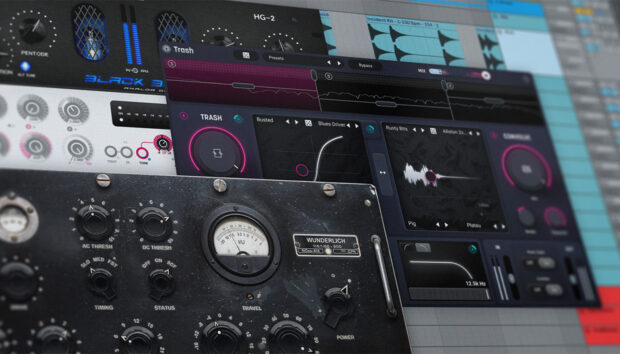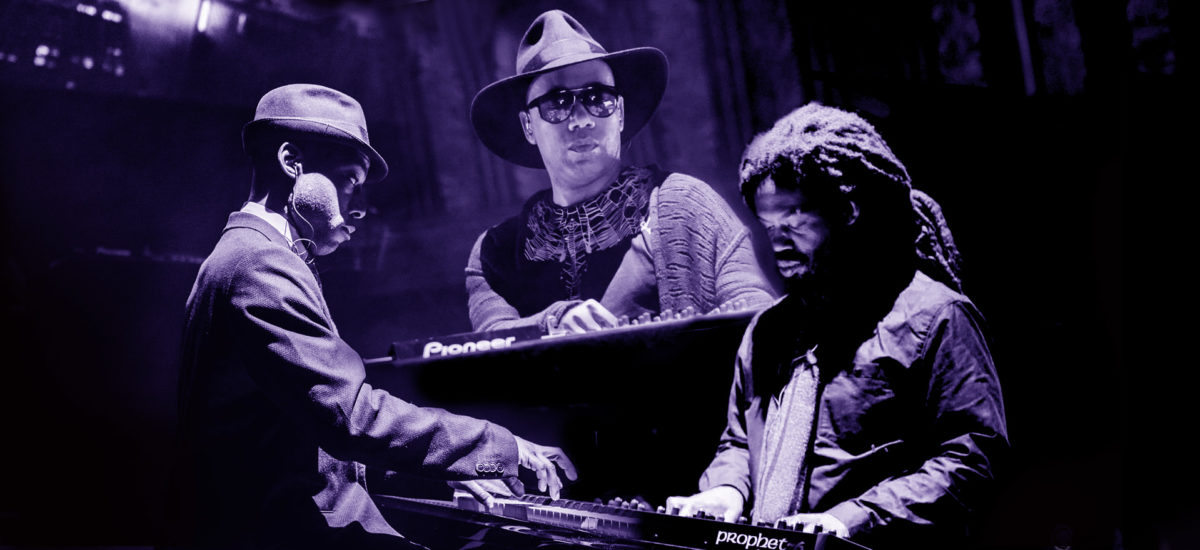
Talking to Peter Kirn for Native Instruments, Detroit’s Carl Craig talks about the processes that went into his latest live project Synthesizer Ensemble.
The godfather of techno certainly could show up on stage alone, play some records, and leave everyone satisfied. But he’s never been one to take the easy way out. Carl Craig’s Synthesizer Ensemble is a live, maximalist re-orchestration of this techno icon’s work – top-flight musicianship and dexterity colliding with an outsized tech rider.
Working with composer Francesco Tristano and an assembled phalanx of keyboardists, Craig mixes the impact of a symphony with the danceable language of groove. The ensemble has produced a record (2017’s Versus, on Infiné) and now tours with the live show.
Native Instruments sought to find out what makes Craig’s own sonic imagination tick, as well as how he translates it to this larger form. How does he manage all of those human personalities, let alone keep humans and machines in harmony? Speaking by phone from his mom’s house in Detroit – only briefly distracted by a colorful guest on an episode of Dr. Phil playing in the background – Craig elaborates on this modern reinvention of chamber music and techno.
So there’s a ton of gear on stage: computer, synths, instruments. What have you got there, exactly?
We have two [Dave Smith Instruments] Prophet-6’s, two [Oberheim] OB-6’s, [an Arturia] MatrixBrute, a Maschine controller, a [Pioneer] CDJ and [an Allen & Heath] Xone mixer, and a grand piano.
With all those sounds, front of house must be really important, right?
My tour manager is the front of house guy – and it’s an advantage, because he’s involved in doing a lot of sound, a lot of festival sound. But also he’s a mastering engineer, so he gets the best of both worlds. So you’ve got the ears but also the technical prowess.
And you’re working from notation?
Everything is scored, outside of the embellishments that Kelvin [Sholar] does on the piano and the solos that I take. So the four synthesizers are actually playing within the range of the music, and it’s pretty strict what they’re doing.
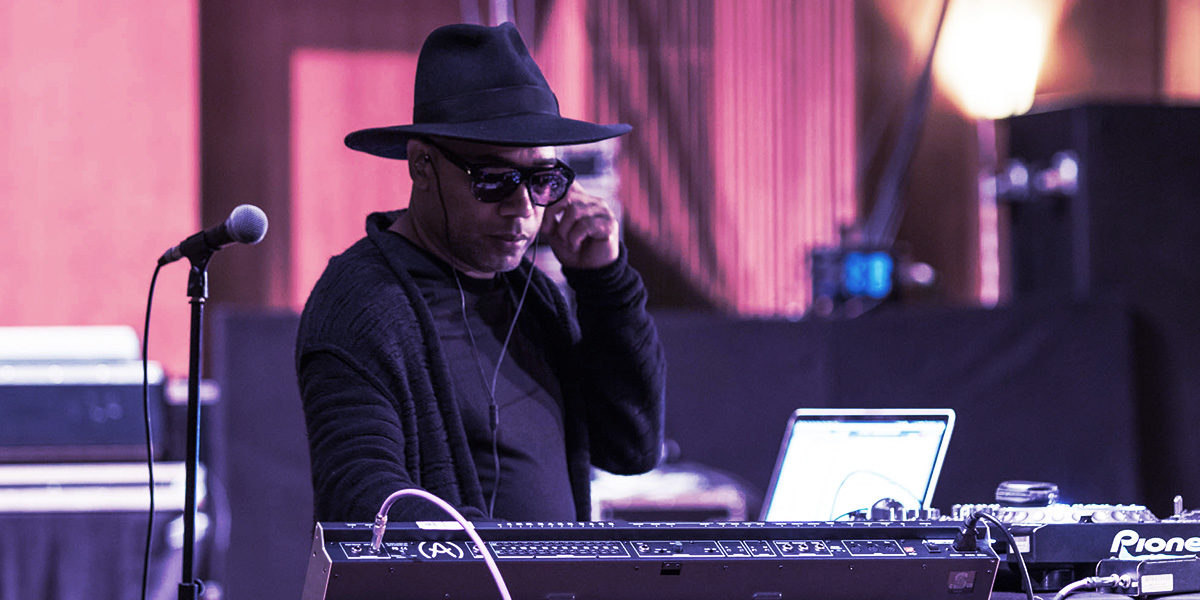
This project was a long time in gestation. How did it come about?
About ten years ago, we came up with the idea – actually, it was Alex Cazac, who’s my partner on the Versus project. He’s the one who came up with the idea and got the original players, as well as Francesco Tristano, who was signed to his label Infiné. And Francesco did the original scores for the pieces. So this was a project that had been in play for quite a long time – for nine or ten years before we did the first synthesizer performances.
When we did the first performance of the material, that was with [the] orchestra, and then we decided to record [the project] after that. The performance was out of sight – it was quite incredible.
We took some risks. When we did the recording, I had never recorded an orchestra before. And they had never recorded the way we had planned to. The idea was that we would record in sessions so we could take it back later and manipulate it. So there was a learning curve on both sides. And there was a lot of fixing that needed to be done. It changed hands a lot of times before it got to me to add my love to it and mix it.
What was new to the orchestra about the way you were working?
They don’t work with a click. They pay attention to what the leader is doing – the conductor – and they follow his groove. Contemporary recording situations or modern recording situations, you find yourself overdubbing parts, so you might start off with the drums first, and then you do bass, guitar, keyboards. And then the drummer might come back and redo his drum parts. And the singer comes on. You have this process that’s been this way for the last 30-plus years. So when we did the recordings with the conductor, we started with the wrong instrumentation. We started with the horns. And I didn’t know any better, but we followed the conductor — and he said, “Let’s do the horns first.”
It was funny. But he had to learn and we had to learn – we were both green. It went through a few different hands to get it to the point where I could work with it.
How did you approach working with these orchestral ingredients, given your production history?
I had to treat it not only as though it’s my material. There were these master players who were on the record. I had to be very compassionate to what they were doing. But also because of the amount of remix work I’ve done over the years, I tackle things as if I were remixing something.
There’s this joke where a producer has a musician come in and play one note on the horn, and then says, “Fine, you’re done – we’ll do the rest in post.” Is there a temptation to do too much with manipulating that material digitally?
My engineer for many years – he works with The Black Keys – when he was recording bands, before he was working with me, the guys almost punch in each note that they wanted to play. They were editing it in Pro Tools. And it becomes this kind of mess of a solo instead of being that natural feel.
So that’s what I try to make sure of: that there’s enough of this natural musicianship instead of it just being a hack job. And you know, I keep that when I do remixes as well.
Another example is when we did The Detroit Experiment [2003, Ropeadope Records], the solo from [trumpeter] Marcus Belgrave is actually sampled and pieced together from various parts that he played in the recording, and that’s how I got the best take. I’ve already had experience with cases as far as jazz music is concerned, and so it wasn’t so foreign for me to do it with [the] orchestra. It’s just more players.
What was your early musical experience like, as far as technique? Does it shape the way you approach making music now?
When I started making music, I had a [Sequential] Prophet-600, and an Alesis MMT-8 sequencer, and a four-track that I had borrowed or stolen off somebody. And that’s how I made my tracks. I would come up with these sequences that were quantized, but what made them not feel quantized was the modulation that I would do with the parameters: filter cutoff and resonance and ADSR and LFO – anything to be more interesting than just a straight 16th-note-quantized track. And then I would solo on top, and that made it feel completely real, in comparison to a sequence rolling over and over again. And it moved just a little bit.
I was always inflecting this humanness to what I do, with the sequencing, with playing the solos on top, from using the mixing board as an instrument, and from combining mixes together.
With tape or with DAT, you would just have it running, so you’d do a ten-minute mix, and start it over again and do another ten-minute mix. With automation, you’re trying to make all the great things happen [there] — in comparison to having only the good parts that you take.
Right – it’s easy to get lost. Have you found a way to apply that technique now?
So I guess in this situation, I would take Maschine, and I’d find these ways of automating a track. And then I would bounce it, and then I would go back and un-erase the automation, and then try it again and then bounce it … and then do it again… or just keep re-saving new ones until I found where I wanted it to be.
The aux sends go to the effects – the mixer is there to be used. It’s like playing a guitar.
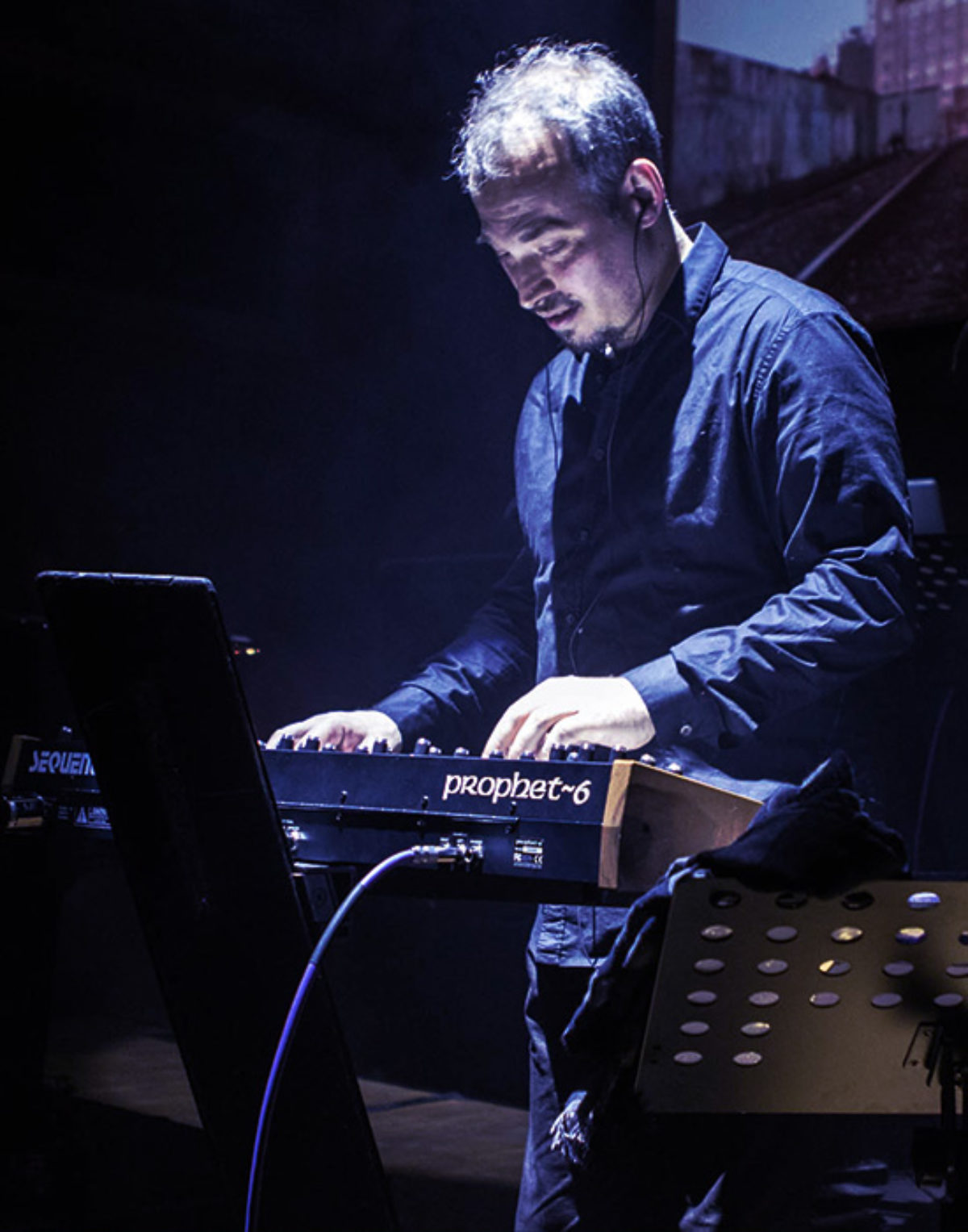
Is that approach born mainly out of your past experience and the limitations of the gear you grew up on? Or is it more to do with who you are, and your personality?
It’s my personality, but it’s also the music that I’m listening to. Even if you take a record that’s been my favorite record for many, many years – that’s Computer World, Kraftwerk – if you listen to ‘It’s More Fun to Compute,’ you can hear exactly what I was doing. Because they would play parts, but they would cut out. That stuff wasn’t automated, because there was no automation. They couldn’t have sequenced the whole thing, because you can deliberately hear the edits – you can hear where they edited things in.
So my approach to electronic music was definitely highlighted by that, but highly influenced by bands. Liquid Liquid and Parliament and Cameo and Zapp and B-52s, Tom Tom Club, Talking Heads… All this stuff was really big in what I was listening to because it was on the radio. That’s where my inspiration came from and comes from.
I did a six-and-a-half-hour set at Cocoon on Wednesday last week at Pasha. And I only played funk. And I realized that I dance way more to the funk thing.
I would love to see a techno band that’s a funk band — in comparison to what we’re hearing these days, where it’s more of a one man band and there’s not a lot of improvisation that happens. It’s quite conjured and calculated. It’s like being a conductor of technology.
But with this Versus project, with the Synthesizer Ensemble, I can really feel like a bandleader.
Right. How is it different when you play with those kind of amazing players, versus the feeling of playing on your own?
Playing with really good players is something… It’s a good feeling because I know that people are hearing some of the best players that I have access to.
When I’m on my own, then I have my own groove, and I can go and do what needs to be done and leave immediately and do the next thing. With a band, you have to wait for everybody. Traveling on my own [musically] is like driving a speedboat, and traveling with a band is like driving a barge.
It’s like if you’re traveling with your family, you’re dealing with personalities of each person. You’ve got kids that you’re trying to wake them up: “Come on, you gotta go.” When we do the shows, we’re definitely like a musical family.
So do you find you need both those things: playing with other artists as well as playing on your own?
I’ve always needed that. It was an element of my career since pretty much when I first started. With Rhythim is Rhythim with Derrick May [Transmat, 1988], that was really my first taste of touring. And then after that I was DJing, but then I would do Innerzone Orchestra live, or I would travel with upright basses and a drummer, or when we did some Detroit Experience shows… It’s like it opens me up. It frees my soul a bit, to do those things.
When you’re traveling on your own, things can get mundane too – your groove can be like going to work every day.
If the people are great, then you have a great time – but if the people aren’t great, then it becomes again this kind of normalcy. When you have a band, you’re dealing with characters, different personalities, and people have things that are interesting to say, and some people have the same thing they’re saying all the time. But you do have that variety.
So you’ve got MASCHINE in your studio and on stage. Talking about the live setup first, how do the computer and MASCHINE fit in?
The computer is the funk box. It’s got everything happening. Maschine… I use it in a very easy and simple way, more for accents and giving things a bit of a lift. And again, because the music is scored, the DAW things are programmed to happen when they’re happening. But Maschine, I do things that are improvised, but very simple.
I like what these finger drummers are doing – Beats By Jblack and all those guys – but I’m not doing anything like that onstage. Maybe what I’m doing with Maschine is even closer to what symphonic drummers do: very locked in to what it should be.
How does that compare to how you work with MASCHINE in your creative process?
Before it was released, it was introduced to me as being a live performance instrument. It only became a studio instrument when I saw it. I told the guy this was the MPC killer, and that’s what it became at one point.
Certain things like live quantization, that’s mainly so that you cannot sound like shit. So I’m using it exactly the way it was intended.
I think now the program itself has gotten really good and the controller has gotten the best that it’s ever been with the MK3. And with Komplete Kontrol … I find myself focusing on using Maschine without any other DAW. And I look at it as being a DAW.
What I like the best about it right now is the Komplete Kontrol thing and NKS. Because you know, I’m using [u-he] Diva, and I found this guy online that did kind of a librarian thing for [Spectrasonics] Omnisphere like NKS, so I can use that inside of MASCHINE. Just everything that I really need, I can navigate around a lot better than what it was before.
So that’s where it really brought me back into concentrating on working inside of Maschine. I’ve gone back to this way of using it as if I was using an enhanced version of an MPC. And with the librarian aspect, with Komplete Kontrol and NKS, you can get to sounds a lot faster. You don’t have to point and click and open and go through – you can just use the controller. And it’s just fast. You can do your tweaks and find whatever you need and keep rolling.
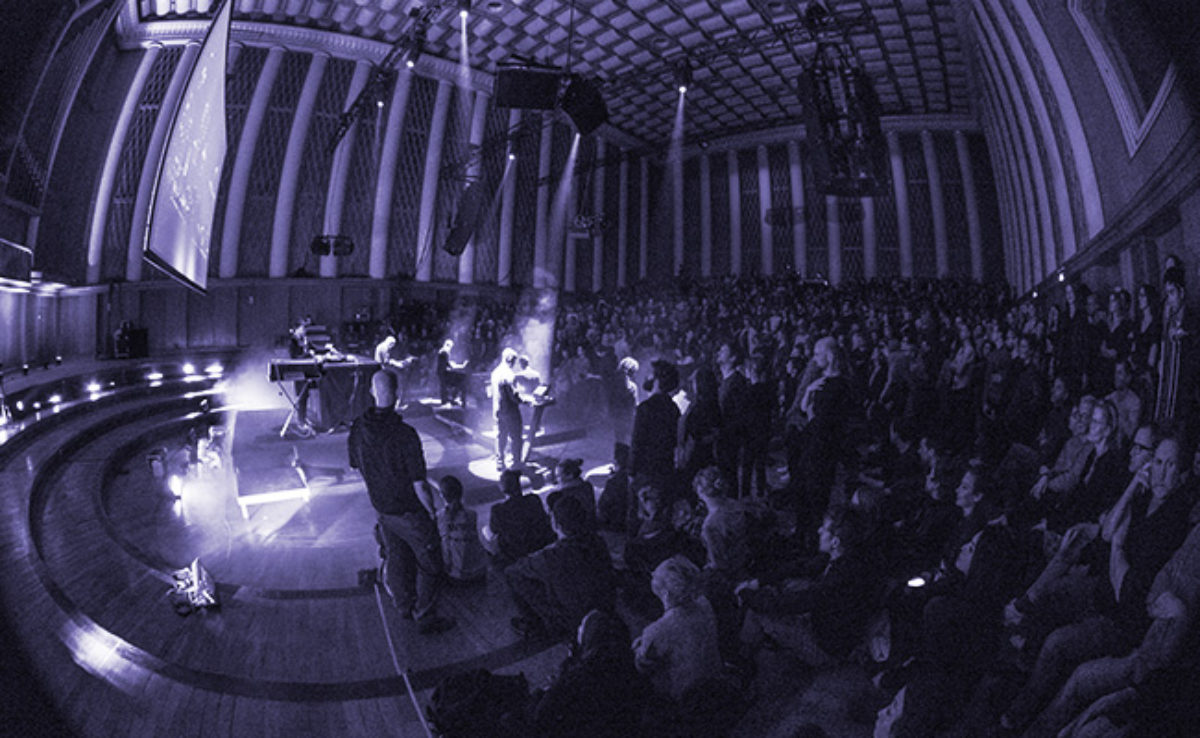
Do you tend to dial in sounds, or modify them, or make them from scratch?
I try to find everything that works for me, and then I alter it. So certain synthesizers, I always found a way of altering them enough where it didn’t matter what that sound started off as, it wound up sounding like my own.
The [Kurzweil] K2000 or [Yamaha] DX100, DX7 were more in-depth in programming – it would just be minimal things that would get done with the sound. Whereas something that had knobs on it – [Roland] SH-101 or Juno-106 – you can go a lot further into manipulating the sound. With those controls, it made it more possible for me to improvise with the parameters.
And do you set aside time for sound design?
When I spend too much time on designing a sound, then it’s more me sitting with a sandwich. I’m just messing around.
Oh, you mean literally sitting with a sandwich?
Yeah, sitting with a sandwich, watching the TV. When I really want to get to the meat and potatoes of it, then I’ll be sitting on a plane or whatever. I don’t know if you saw that photo of my computer and Maschine in the airplane. That’s literally what I was doing – messing with Maschine, eating, and watching whatever was on the screen.
photos: Yvonne Hartmann















